The Comprehensive Guide to Car Cleaning
The Comprehensive Guide to Car Cleaning
We are privately owned and not affiliated with the government in any way or form.

Though most drivers in the United States think of car maintenance as getting regular oil and fluid changes, maintaining the exterior of your vehicle should be a priority as well. From washing your car to polishing or waxing your car, many options are available to maintain the visual quality of the automobile. Detailing can also be a great way to make your car look new again, though there are many different steps that go into detailing a vehicle. Once you have cleaned your car, make sure to implement a few tactics for maintaining the vehicle’s cleanliness as well. To learn more about the various aspects of car cleaning, read the sections outlined below.
Detailing 101
While most car owners are content with a simple wash and vacuum for their vehicle, many drivers like to keep their car as close to looking brand new as possible. Luckily, detailing your car can achieve this effect regardless of how long you have had the vehicle. The proper method for detailing a vehicle requires drivers to start inside the car and work their way outside. To learn more about how to detail a vehicle the right way, read the information outlined below:
Interior Detail
Prior to detailing the inside of your car, you should first remove any loose items. These include floor mats and any other accessories that can be removed. Once the car is empty, vacuum the entire interior including the floor, trunk, backseat shelves and the upholstery. While vacuuming, work your way from the top to the bottom so you can catch loose dirt and dust falling from the top as you move.
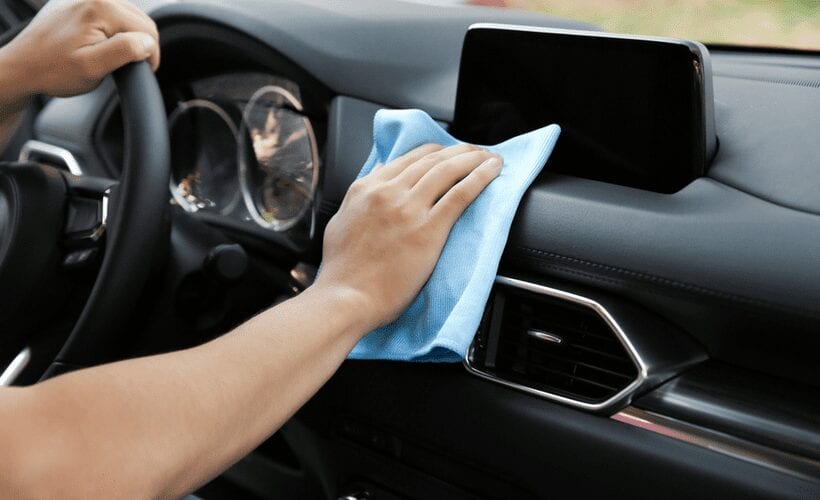
For stains, use a foam cleanser and a damp cloth to rub it in. Let the foam cleanser sit for a few minutes to work on the stain, then blot the stain with a dry cloth. Repeat until the stain is completely removed. Repair holes in your carpet and upholstery by cutting the hole into squares and replacing it with a piece of upholstery from another part of the interior that can’t be seen on the surface, such as beneath the back seat.
Dashboards and other hard interior surfaces can be cleaned with an all-purpose cleaner, with some Armor All to finish it off. Additionally, a can of compressed air can help remove dirt and debris from buttons and knobs in the car. Use glass cleaner to clean your windows and mirror as well.
Finally, to really leave the interior of your car smelling and looking brand new, shampoo your car seats. Depending on the type of seats your car has, this process may be simple or complex. Buy a good brand of car seat shampoo and follow the instructions on the bottle carefully.
Exterior Detail
The first step for detailing the exterior of your car is to brush the wheel rims clean using wheel cleaner and a decent wheel brush. Cleaning the rims of a vehicle automatically enhances the car’s shine, as this is where most dirt collects on a car. For dirtier wheel wells, allow the cleaner to sit for a minute or two before wiping it off.
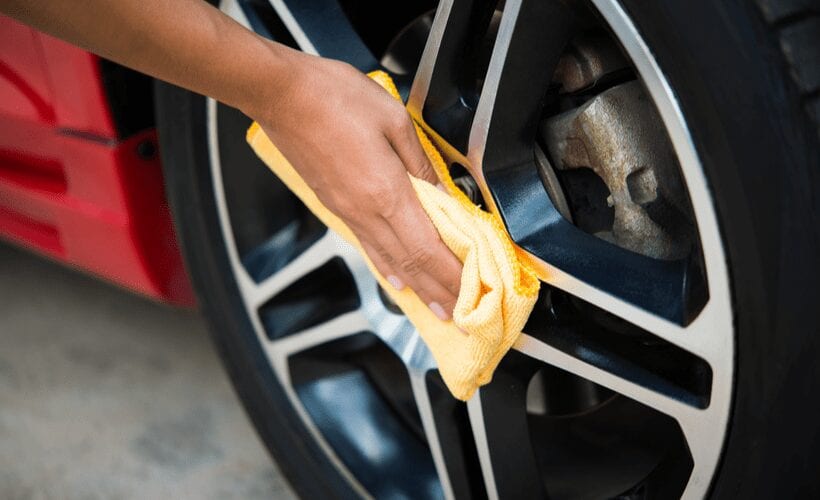
Before detailing the rest of your car, make sure all electrical components under the car’s hood are wrapped in plastic to avoid water damage. From there, spray some degreaser on your engine and wash the engine down with a hose. When cleaning windows in your car, be careful not to use cleaners that are too acidic, as this can damage any after-market tinting work.
When washing the exterior of your car, use specialized car wash soap. Park your car in the shade to allow it to cool down and also avoid quick drying which can leave water spots on the vehicle. Set up two buckets of water: one with soap for washing, the other with clean water for rinsing.
While washing your car, work from the top down as you did with the interior. This way you will catch all the dirt as it falls during the wash. After rinsing the vehicle, use a chamois towel to dry the entire exterior.
Lastly, once your wash is finished you can apply car wax to the vehicle to enhance its shine. When waxing your car, use either a dual-action car polisher or an orbital buffer. Let the wax dry once it has applied, and your vehicle will look good as new.
How to Keep Car Clean on Road Trips
Keeping your vehicle clean can be a chore in itself. However, the task is even more difficult when you are in the middle of a road trip. Since road trips require drivers and passengers to spend long periods of time in a vehicle, the inside of the car becomes something of a living space. This can be problematic when it comes to issues such as discarded trash and spilled drinks. To learn more about how to keep your car clean on road trips, read the information below.
Refrain from Eating in the Car
Most car messes arise because the driver and/or passengers were eating in the car and spilled either their food or drink. On short road trips, this can be avoided by eating before or after the trip. For longer road trips, it may be harder to avoid eating in the car. In these cases, make sure to keep your food confined to a space, such as on your lap. Also, eat your food on something you can throw away, such as the packaging it came in.

Keep Trash Separate
Kill two birds with one stone by storing those plastic bags you receive when purchasing products at grocery stores or convenience stores in your vehicle’s glove compartment. Use these bags as a trash bag to keep any discarded items in during your road trips. This way you will always have somewhere to put your trash other than on the floor of your car.
Maintain Regularly
To maintain the cleanliness of your vehicle, be sure to check the interior regularly. Whenever you stop at a gas station, check the floors for trash and discard any waste in the gas station’s trash receptacles.
Store Children’s Items
Children’s toys and other items have a tendency to end up all over the place. Keep the car organized throughout your road trip by storing your child’s items in a small bin or backpack.
Stomp Your Feet
Much of what adds to dirt buildup in your car originates outside. You manage to get the dirt inside your car by transferring it on your body, most likely on your shoes. To avoid this, stomp your feet on the pavement to remove any loose dirt and debris before entering the vehicle.
Separate Receipts
Another frequent cause of trash build up is caused by discarded receipts. Many drivers walk into a store, buy an item, get back into their vehicle and toss the piece of paper somewhere inside the car. To break this habit, designate a space inside the car where you will keep all receipts.
Use Air Freshener
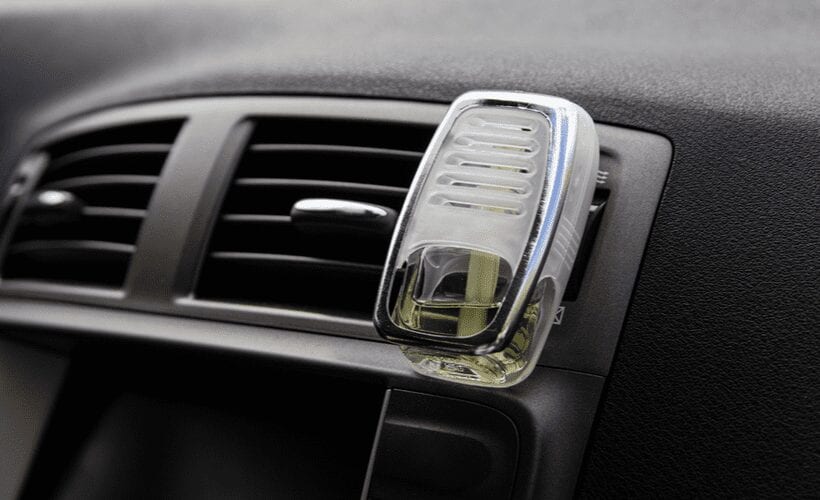
Though your car may look clean, that is no guarantee it smells clean. The interior of a vehicle can accumulate plenty of dirt over the years, which can alter the normal smell of the car. Additional factors that affect the scent include the types of items you bring in the car, whether or not you eat in the vehicle and if you have spilled food items that are sitting in the car (particularly in the sun). To mask any lingering smells, buy a decent car air freshener.
Car Washing 101
Washing a car may seem like a simple task at first. However, many car owners who have picked up a water hose quickly realize there is more to washing a car then simply pouring soap on the surface. To learn some tips on the best way to wash a car, read the information provided below.
Keep It Shaded
Always wash your car in the shade. Washing your car in the sun will dry up water and soap faster than in the shade. Drying your vehicle before it has been properly rinsed will leave marks on the vehicle. Additionally, make sure the day is as calm as possible. Too much wind will send dirt particles into the air which will stick to your paint and ruin the wash.
Wash (and Pre-Wash) with the Right Shampoo
Prior to washing your car, buy a high quality car shampoo. Additionally, purchasing some wash mitts can help you wash the car without scratching the paint.
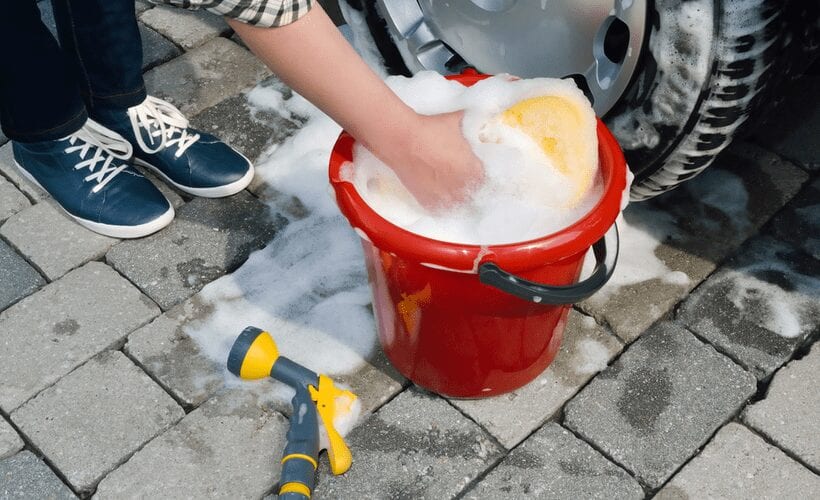
When washing, fill a bucket (a five gallon bucket is recommended) and add shampoo as directed on the shampoo bottle’s instructions. Fill a second bucket with clean water for rinsing.
To start, rinse all loose dirt from the vehicle with a hose. The amount that you need to pre-wash the car depends on how dirty it is when you wash it.
Top to Bottom
When washing your car, the proper procedure requires car owners to work their way from the top of the car to the bottom. This is because the dirtiest parts of a car are typically near the bottom, where dirt kicks up as you drive. By starting at the top of the car, you allow all the dirt and grime to run down to the bottom of the car where it can be easily washed off near the end of the process.
Once you have your buckets of soapy and clean water and your car has been pre-soaked, apply the soapy water to the entire surface of the car. Make sure to wash your wash mitt frequently in the clean water as you move forward.
Wash Twice in Lines
Your initial car wash should be a light rub of the wash mitt over the entire vehicle in straight, parallel and overlapping lines. Once you have loosened all the dirt and grime with this first run-through, pass over the surface again to pick up any remaining dirt.
Rinse with a Hose
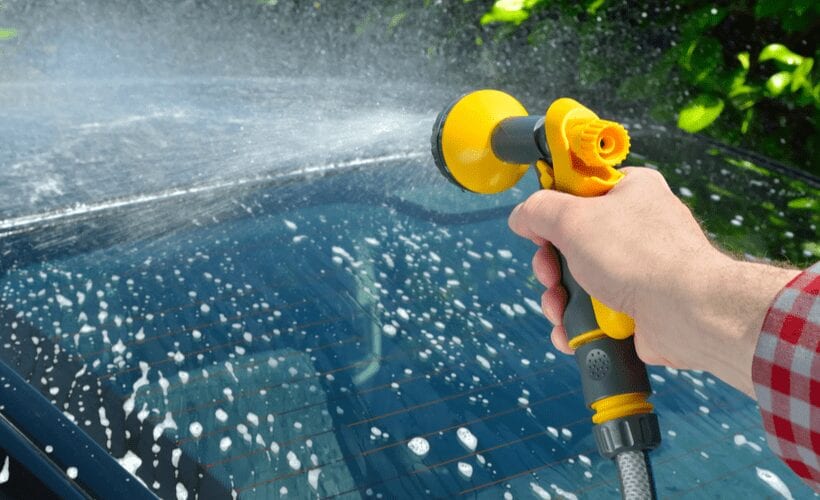
After you have finished with the soap, rinse your car off using a hose with a fire hose nozzle (if you do not have a fire hose nozzle, just allow the water to flow from the hose with no nozzle). Allow the water to run over the vehicle in sheets to leave as little water residue as possible.
Dry Carefully
When drying your car, use a high quality microfiber drying towel. These are specifically made for drying cars with painted surfaces and keep the paint from getting scratched. Additionally, do not rub the surface of the car with the towel. Since the towel is only meant to pick up excess water, simply run it over the surface of the car. Use a second towel to continue drying the vehicle if the first one becomes too damp.
Best Ways to Polish/Wax Car
Polishing your vehicle is one of the best ways to get it back to the look it had when you drove it off the dealership floor. However, depending on your experience waxing and polishing vehicles, you may need help figuring out the best way to approach the task. Luckily, there are a few surefire ways to get the best results from your car polishing. To learn more about how to polish and wax your vehicle, read the information outlined below.
Wash the Car
Prior to polishing your vehicle, you must first wash it. Once you have washed the vehicle thoroughly, refrain from drying it until you have polished the car. Wash your car in a shaded area so that the sun does not prematurely dry the vehicle and leave spots.
Start Polishing
After washing your vehicle, cover your polishing wheel with a clean and slightly moist cloth. Place a bit of polish on the car panel you plan to polish first, then start working it in with the polishing wheel. Use a medium speed as you spread the polish while also keeping constant pressure. As you work over the entire surface of that particular panel, keep the polishing wheel parallel with the car’s surface. This way you avoid swirl marks which can take away from your overall finished product. Once the panel is finished and shining bright, move on to the next car panel and repeat the process.
While polishing, keep the panel area wet and do not overuse the polish.

Rinse as You Go
Car polish has a tendency to get gummy with excessive use. To avoid gunk building up on your polishing pad, rinse frequently with a hose or power washer. Additionally, too much friction between the car panel and the polishing pad can ruin your car’s finish. Be careful when polishing with the outer edges of the polishing pad, as these areas tend to carry less polish and therefore are more likely to damage your car’s paint.
Wash After Polish
Once you are done polishing your vehicle, wash and rinse the car once again. Do so by hand to avoid messing up your recent polish. Areas of focus include the car doors, trunk, and the jambs of the car hood. When you are done, dry the car carefully.
Apply the Wax
After polishing and re-washing the vehicle, car owners should apply a coat of wax to both seal in the polish and cover up any surface flaws that might still be apparent. For best results, use a soft foam pad attached to a sander and apply a mix of roughly half paste wax and half fine finishing polish to the entire vehicle.
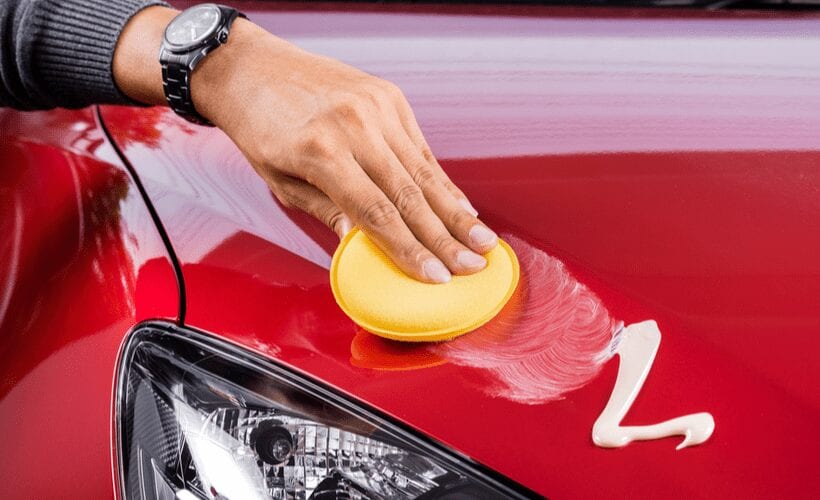
Dry and Wipe
After you have finished waxing, allow the wax to dry then remove it with a towel, preferably of the microfiber variety. From there, move your vehicle into the sunlight, inspect and enjoy.
How to Maintain Vehicle’s Cleanliness
Many car owners feel a sense of pride after their vehicle has been recently cleaned. However, this feeling usually does not last, as cars tend to return to their unkempt state fairly quickly. Car owners can lengthen the amount of time their vehicle remains clean by following a few cleanliness tips. To find out more about maintaining your vehicle’s cleanliness, read the information provided below.
No Food
A car is sometimes considered a dining room on wheels. While it may seem convenient at first, it can lead to many mishaps which in turn will shorten the amount of time your car remains clean. To avoid errant wrappers, food cartons, drink stains or random crumbs in the corners of your seat, refrain from eating in your vehicle.
Keep it Waxed
Though it may seem like a hassle, waxing your car after every wash stops dirt particles from sticking to your paint. Additionally, waxing your car now can make it easier to clean during your next wash.
Stomp your Feet
Dirt is typically tracked into your car from the outside through articles of clothing. To lessen this effect, knock your shoes against the concrete before getting in your car. This way, any loose dirt stuck to your shoes that would usually end up on the car’s interior will remain outside. This is especially useful during rain or snowy weather.
Clean Quickly
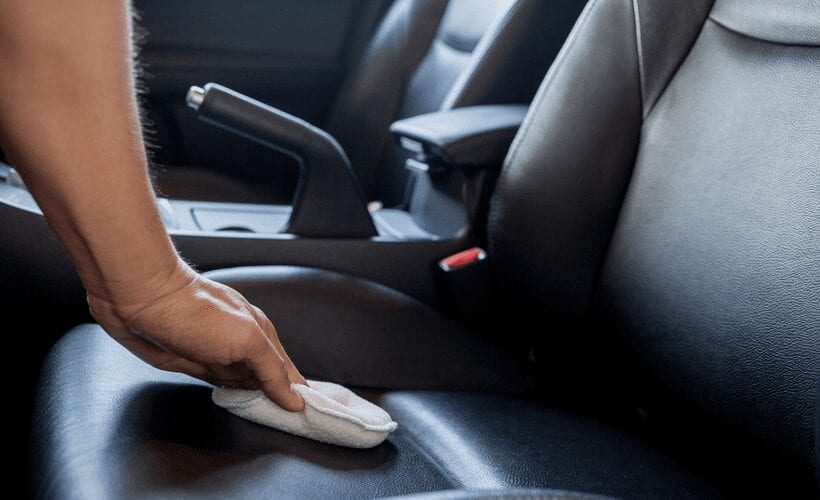
One of the biggest reasons for stains is that the mess that caused the stain was allowed to sit and dry. To avoid the long term affects of drink or food spillage, clean up all messed the moment that they occur.
Garage Living
If you reside in an area with covered parking or you live at a home with a garage, keeping your car covered at night can alleviate several cleanliness issues. Most of the wear and tear that affects the state of a car’s exterior is due to outside weather. To avoid losing your car’s luster to the elements, keep it in storage each night.
Carry Disposable Resources
Many times, discarded food items and packaging end up on the floor or seat of your car simply because there is nowhere else to put it. To help with your car’s overall cleanliness, keep a trash bag in the car that you can deposit trash in and remove each time you get out.
Wash Routine
One of the best ways to make sure something gets done regularly is to make it part of your routine. If possible, set a car wash schedule and stick to it so that your vehicle is being cleaned on a weekly or bi-weekly basis.
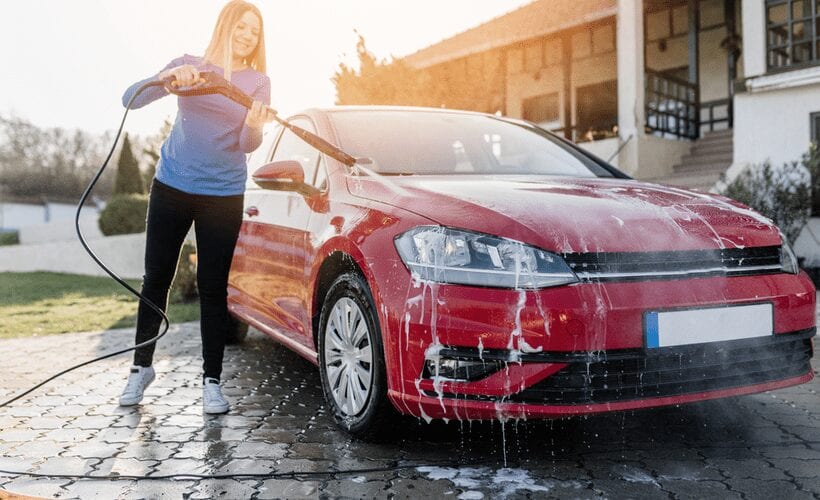
Maintain Order
The best way to maintain your vehicle’s cleanliness is to clean it thoroughly once, then make a conscious effort to always leave it in the same state whenever you exit the vehicle. Though this may take some diligence, it is a surefire way to make sure your car remains in pristine condition.




